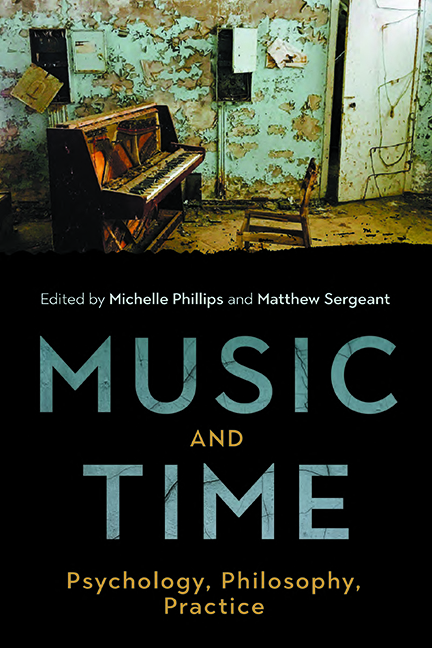Conclusion: Multiplicity, Fluidity, Fragility
Published online by Cambridge University Press: 07 October 2022
Summary
A Mess Revealed
All music engages with time in multiple ways. This is not a useful statement with which to conclude this volume. That is, of course, not to suggest that such a statement is not true. Musical time is experienced by listeners, enacted by performers and composers, and offers meaning(s) to all parties. And in each context, whilst the subject matter remains ultimately the same, the terms of the discussion are fundamentally different. Instead, it is not useful because – having traversed this volume – it tells us little of the polyvalent, volatile, and mobile nature of the space now revealed.
Chapters 1-4 demonstrated the plurality of experiences of musical time that can be felt or offered. Time in music is felt to pass through the experience of it – and as we feel and acknowledge it. The LEMI model proposed by Phillips in Chapter 1 demonstrates the multi-layered and intertwined factors which shape these experiences. As such, experiences of musical time are innately plural, different for each listener on each listening. One may be enthralled – lost in a performance – whilst the person in one's neighbouring seat begrudges every second. How we then talk about these experiences is therefore equally multifaceted. In Chapter 2, Harrison demonstrated how such experiences can be offered, with a journey through musical time now adopting a materiality, to be bent or warped, sculpted or shaped artistically. Jones, in Chapter 3, reminds us of the extent to which musical time can change dependent on the way we think about it, be that prospective or retrospective in nature, whilst in Chapter 4, Connor and Smith demonstrated a plurality of models for understanding or conceptualising the musical present, all of which appear flawed in different ways.
Musical time is volatile, especially from the perspective of those who enact it. The material presented in Chapters 5–7 illustrate this well. Wing, Witek, Stables, and Bradbury revealed the hidden world of micro-scale ensemble synchronisation in Chapter 5, where performers engage in group dynamics at the level of the millisecond to constantly find, adjust, and rectify the temporal grid of the music in which they find themselves. The question of timing and tempo here emerged, not as something fixed and regular but as something ever-changing and fragile.
- Type
- Chapter
- Information
- Music and TimePsychology, Philosophy, Practice, pp. 177 - 180Publisher: Boydell & BrewerPrint publication year: 2022

